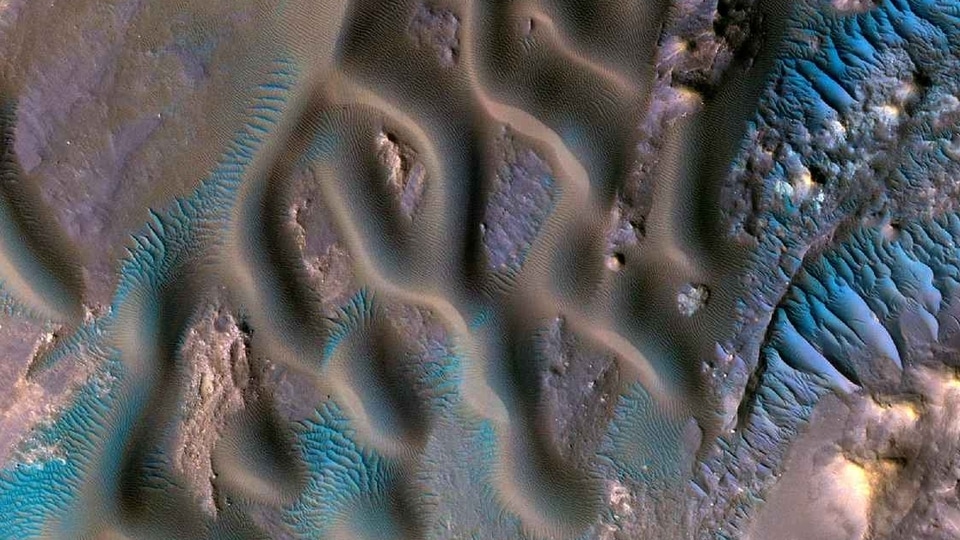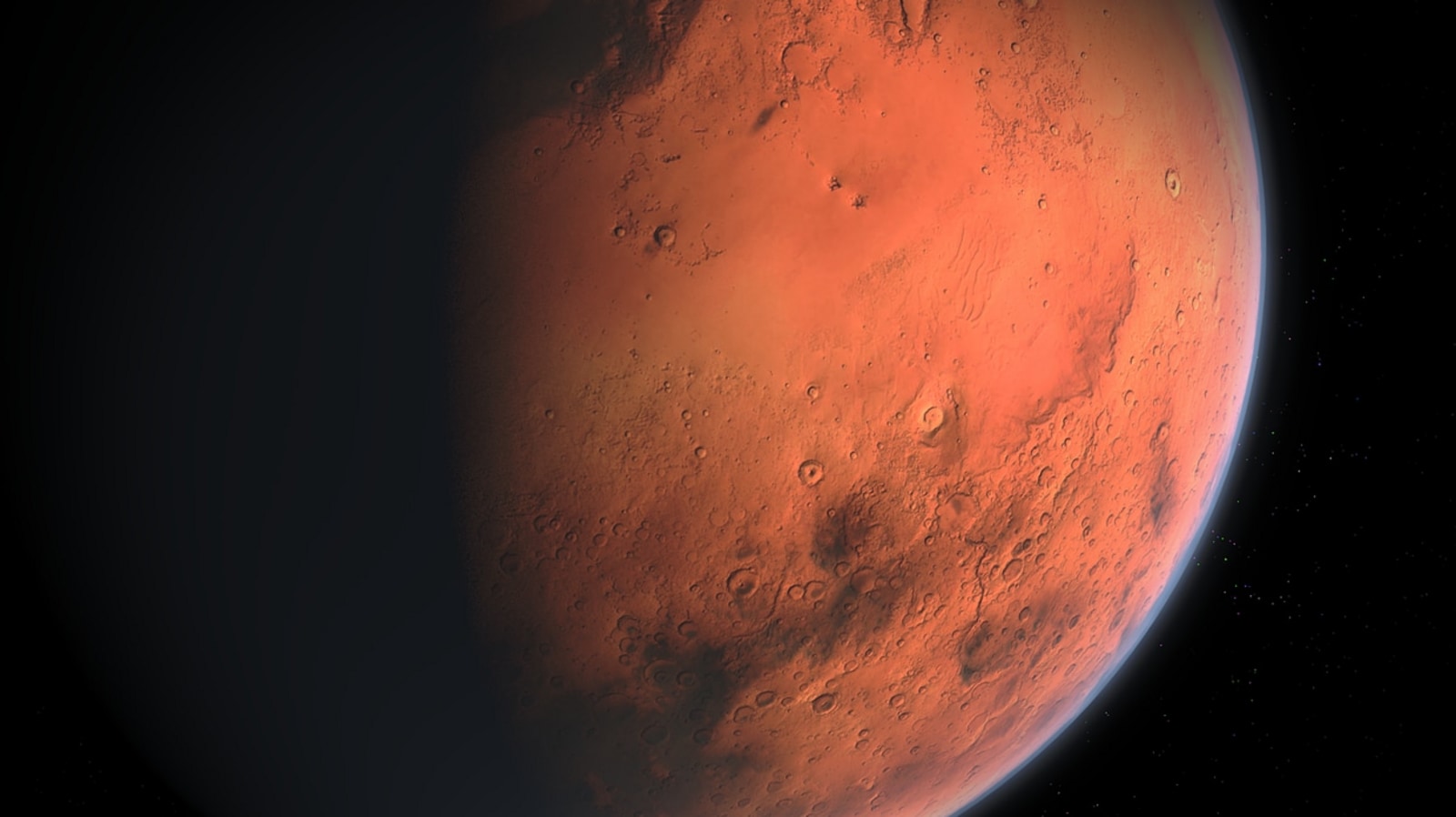Life on Mars? Research explores possibility of life beyond Earth; check out What and Where
For millennia, caves have served as shelters for prehistoric humans. Caves have also intrigued scholars from early Chinese naturalists to Charles Darwin.






 View all Images
View all ImagesDo caverns on Mars harbour life?
Although that's a valid question, it isn't the appropriate one right now.
According to an international group of experts led by Jut Wynne, a researcher at NAU, we need to ask and answer dozens of questions. We can come back to that question after learning how to analyse caves on the Moon, Mars, and other planetary worlds.
The lead author of two related studies, both of which were included in a special collection of publications on planetary caves by the Journal of Geophysical Research Planets, is Wynne, an assistant research professor of cave ecology. An interdisciplinary team of 31 scientists, engineers, and astronauts completed the first study, "Fundamental Science and Engineering Questions in Planetary Cave Research," and from a list of 198 questions they narrowed it down to the 53 most crucial ones with the help of 82 other scientists and engineers with expertise in space and caves.
This work is the first to highlight the scientific and technical goals to further the study of planetary caves, drawing on the expertise of a sizeable segment of the space science community.
The team expects that their research will help determine what will ultimately be required to enable robotic and human expeditions to planetary caves, including those that take place on the Moon and/or Mars.
The first study served as the basis for the second, "Planetary Caves: A Solar System View of Products and Processes." Wynne discovered that there had been no attempt to compile a list of all the planets' caves, which is an essential component of the whole picture. For that task, he gathered yet another group of planetary specialists.
"With the necessary financial investment and institutional support, the research and technological development required to achieve these necessary advancements over the next decade are attainable," Wynne said. "We now have what I hope will become two foundational papers that will help propel planetary cave research from an armchair contemplative exercise to robots probing planetary subsurfaces."
What we know about extraterrestrial caves
They are in great numbers. On 11 different moons and planets in the solar system, including the Moon, Mars, and moons of Jupiter and Saturn, scientists have discovered at least 3,545 potential caverns. Even comets and asteroids have been found to contain cave-creation processes. It presents a previously unattainable opportunity for scientific discovery if the environment around one permits access to the subsurface.
These caverns may yield a wealth of information. One day, caves might allow researchers to "see into the depths" of these stony and icy entities, giving them information about how they formed (but also can provide further insights into how Earth was formed). Of course, they might also contain life's greatest secrets.
"Caves on many planetary surfaces represent one of the best environments to search for evidence of extinct or perhaps extant lifeforms," Wynne said. "For example, as Martian caves are sheltered from deadly surface radiation and violent windstorms, they are more likely to exhibit a more constant temperature regime compared to the surface, and some may even contain water ice. This makes caves on Mars one of the most important exploration targets in the search for life."
And it's not just finding life - these same factors make caves good locations for astronaut shelters on Mars and the Moon when crewed missions are able to explore.
"Radiation shielding will be essential for human exploration of the Moon and Mars," said Leroy Chiao, a retired astronaut, former commander of the International Space Station and co-author of the first paper. "One possible solution is to utilize caves for this purpose. The requirements for astronaut habitats, EVA suits and equipment should take cave exploration and development into consideration, for protection from both solar and galactic cosmic radiation."
What Earth can tell us about other planets
Wynne, whose primary area of study is terrestrial caves, noted that planetary cave research has been an ongoing research subject for almost 20 years. Unique habitats that are occasionally quite distinct from the local surface ecology are supported by caves. Who's to say a cave on Mars or the Moon wouldn't be comparable? He has studied many cave-related issues on Earth, but he has often pondered how they might relate to other planets.
The connection is being drawn by others than him. Wynne has collaborated on numerous research projects with NASA to develop detection technology, and his modelling of cave habitats gives little consideration to whether a cave is on Earth or another planet. The ecology of the caves shares enough similarities to allow for logical predictions, which will play a significant role in choosing which caves to target for exploration.
"Tellurian caves at depth are often characterized by complete darkness, a stable temperature approximating the average annual surface temperature, low to no airflow and a near-water-saturated atmosphere," he said. "The caves of other planetary bodies likely exhibit similar environmental conditions, but these will also be influenced by the surface conditions of the planetary body and the internal structure of the cave."
Keith Cowing, the editor of SpaceRef.com and NASAWatch.com, said using the existing infrastructure of a planet's surface and subsurface may help humans get to other planets sooner than if we had to bring everything needed to survive with us.
"Humans have been living in caves for hundreds of thousands of years. Then they built their own when none were available," he said. "As such, it is only natural to assume that caves will offer similar utility as humanity expands to other worlds. While planet-wide terraforming may be an end goal, the use of large, pre-existing structures such as caves and lava tubes may be a more practical way to bootstrap the technology to the maturity needed to tackle the surface of an entire planet."
Where are we now?
Even though a lot of this research is prospective, it's important to take into account the resources, research, and support that are now available. There are several robotic platforms and instrumentation suites being tried, however, there is always a hurdle due to a lack of money. In the next five to ten years, a robotic exploration mission to a cave on the moon or on Mars might be feasible with enough funding.
Wynne views this research as a to-do list for the same process and sees it as building on prior work to provide a road map of sorts for moving forward. The questions that needed to be answered by the scientists and engineers outlined the steps that needed to be taken in order to get ready for that robotic exploration, as well as the developments that would be required for spacesuit technology, habitation modules, and hardware that would allow people to live and work safely underground on the Moon and Mars.
"This is an untapped area of inquiry in planetary science, and its importance in the search for life should not be overlooked," he said. "In our lifetime, it is quite possible that we will peer into underground Mars to address the age-old question, 'Does life exist beyond Earth?'"
Catch all the Latest Tech News, Mobile News, Laptop News, Gaming news, Wearables News , How To News, also keep up with us on Whatsapp channel,Twitter, Facebook, Google News, and Instagram. For our latest videos, subscribe to our YouTube channel.






























